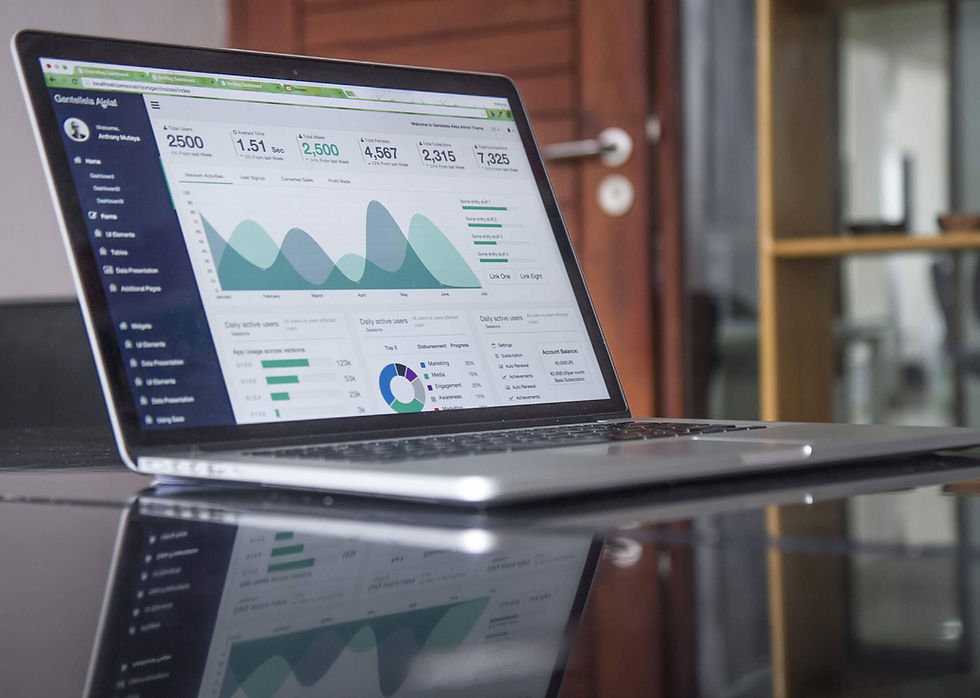Logistic Insights: How Are Analytics Used In Logistics?
- Rick C.
- Mar 8, 2023
- 4 min read
Updated: Dec 4, 2024
The logistics industry, once primarily focused on the physical movement of goods, has evolved into a data-driven field where analytics plays a critical role. Companies now rely heavily on advanced analytics to optimize operations, reduce costs, and enhance customer satisfaction. These data-driven insights are no longer optional but essential for maintaining a competitive edge in today’s fast-paced markets. This blog dives into how analytics is used in logistics, providing actionable insights and exploring tools that are transforming the industry.

How Are Analytics Used In Logistics?
In the fast-paced world of logistics, data is no longer just a byproduct of operations—it’s a driving force behind decision-making, optimization, and innovation. Analytics has become indispensable, empowering businesses to enhance efficiency, reduce costs, and deliver superior customer experiences.
Types of Analytics in Logistics
Analytics in logistics encompasses several key types, each addressing specific needs within the supply chain:
1. Descriptive Analytics: Understanding the Past
Descriptive analytics provides insights into historical data, helping organizations monitor key performance indicators (KPIs) such as delivery times, inventory levels, and order fulfillment rates. By visualizing trends through dashboards and reports, companies can gain clarity on past performance and identify areas for improvement.
Example: A logistics provider uses descriptive analytics to monitor on-time delivery rates. A spike in late deliveries prompts an investigation into potential causes, leading to adjustments in scheduling and driver allocation.
2. Diagnostic Analytics: Delving into the ‘Why’
Building on descriptive analytics, diagnostic analytics digs deeper to identify the root causes of operational inefficiencies. By analyzing patterns and correlations, companies can pinpoint issues such as delays or increased transportation costs.
Example: A diagnostic analytics tool reveals that shipment delays are caused by frequent traffic congestion near a distribution center. The company reroutes shipments, reducing delays by 15%.
3. Predictive Analytics: Anticipating the Future
Predictive analytics uses historical data and algorithms to forecast future trends. Logistics companies leverage this to anticipate demand, optimize inventory, and plan routes.
Example: A predictive model forecasts increased demand during the holiday season. As a result, the company stocks inventory strategically across warehouses, ensuring timely delivery and minimizing stockouts.
4. Prescriptive Analytics: Recommending Actions
Prescriptive analytics combines data insights with recommendations for specific actions, enabling companies to proactively optimize their operations.
Example: A logistics manager receives a prescriptive analytics recommendation to split large shipments into smaller loads, reducing transportation costs and improving delivery speed.
5. Real-Time Analytics: Immediate Insights
Real-time analytics provides instant updates on operational data, allowing logistics companies to respond to disruptions such as weather changes, traffic delays, or equipment failures.
Example: A fleet equipped with IoT devices uses real-time analytics to reroute deliveries based on live traffic data, ensuring on-time arrivals despite unexpected road closures.
6. Cognitive Analytics: AI-Driven Insights
Cognitive analytics combines artificial intelligence and machine learning to analyze unstructured data such as customer feedback or market trends. This cutting-edge approach delivers deeper, context-aware insights.
Example: A cognitive analytics system processes social media feedback to identify growing customer dissatisfaction with delivery times. This prompts the logistics provider to enhance communication and adjust delivery schedules.
Tools for Analytics in Logistics
Modern logistics operations depend on advanced analytics tools to streamline processes and provide actionable insights. Here are some of the top platforms transforming the industry:
1. SAP Integrated Business Planning (IBP): Real-Time Planning and Forecasting
Feature: End-to-end visibility for supply chain processes.
Use Case: Predictive analytics for demand forecasting and disruption management.
2. Manhattan Associates Warehouse Management System (WMS): Warehouse Optimization
Feature: Automation and inventory management analytics.
Use Case: Improves order accuracy and reduces operational costs.
3. Blue Yonder Luminate Platform: AI-Driven Supply Chain Visibility
Feature: Real-time analytics for transportation and inventory optimization.
Use Case: AI-powered demand forecasting and dynamic route planning.
4. Tableau: Customizable Data Visualization
Feature: Intuitive dashboards for logistics performance metrics.
Use Case: Visualizes delivery times, transportation costs, and inventory levels for data-driven decisions.
5. Power BI: Seamless Integration with ERP and WMS
Feature: Real-time reporting for logistics operations.
Use Case: Monitors KPIs across supply chain systems for faster response to disruptions.
Actionable Insights: How to Implement Analytics in Logistics
1. Start with Data Collection
Invest in IoT devices, RFID tags, and telematics to capture accurate, real-time data from your operations.
2. Choose the Right Tools
Select analytics platforms that align with your business size and goals. For smaller companies, tools like Power BI offer cost-effective solutions, while larger enterprises might benefit from SAP IBP or Manhattan WMS.
3. Focus on Training
Equip your team with the skills needed to interpret analytics and make data-driven decisions. Offer training sessions on using platforms like Tableau or Power BI.
4. Scale Gradually
Begin with descriptive analytics to monitor performance, then gradually adopt predictive and prescriptive analytics as your data capabilities mature.
5. Embrace Customization
Consider developing custom analytics solutions tailored to your unique logistics needs, leveraging tools like Python or R for advanced modeling.
Real-World Case Study: Predictive Analytics in Action
Scenario: A 3PL provider faced frequent delays during peak holiday seasons. By implementing predictive analytics, they analyzed historical data to identify demand surges and anticipated disruptions.
Solution:
Increased staffing during high-demand periods.
Pre-positioned inventory at key warehouses.
Optimized delivery routes based on forecasted traffic patterns.
Result: The company achieved a 20% improvement in on-time deliveries and a 15% reduction in transportation costs.
Conclusion
Analytics is no longer optional in logistics—it’s a necessity. From descriptive insights to predictive foresight, analytics empowers businesses to streamline operations, reduce costs, and enhance customer satisfaction. By embracing tools like Power BI, Tableau, and SAP IBP, logistics companies can unlock the full potential of their data, driving innovation and staying ahead in a competitive market.
The question is no longer “How are analytics used in logistics?” but rather, “How will you use analytics to transform your operations?”
- Rick C.


